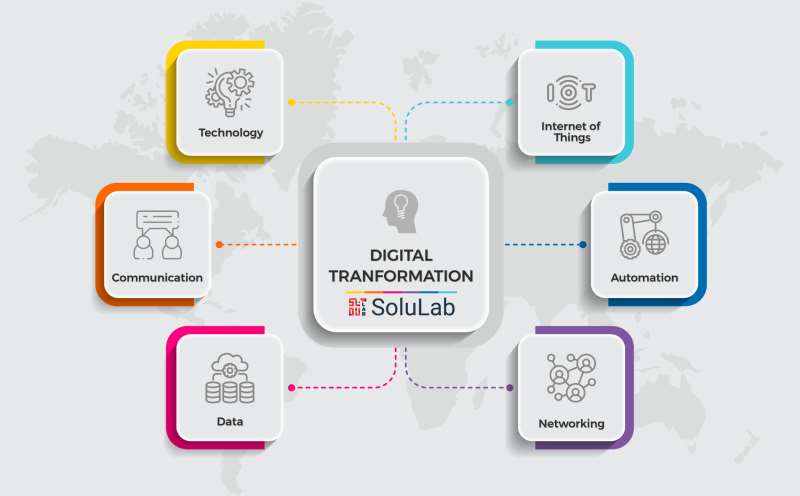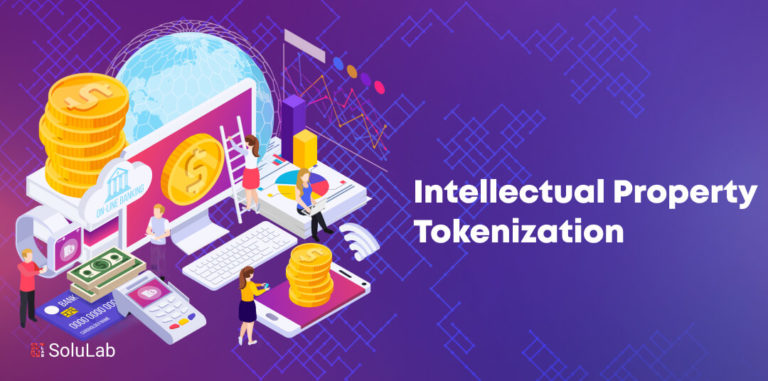Businesses, Individuals, and the community as a whole are affected by digital transformation. The rapid proliferation of digital technology, in particular, causes considerable impact.
Extensive digitization is transforming business and their technological environments. Digital transformation offers businesses and organizations both opportunities and challenges.
Growth And Usage Of Digital Products In The Recent Past
Over the last two decades, there has been a major growth of digital products and services offered for use by businesses for their various needs. For example, social media services such as Facebook, Twitter etc. are increasingly being integrated by organizations as channels for interacting with their clients or customers in a variety of ways.
Businesses and service providers are also increasingly offering services through their websites and applications developed for mobile phones, and many organizations are looking for ways to retrieve, analyze, and act on digital data generated by the use of not only their own products and services, but also those of other organizations.
What is Digital Transformation?

Digital transformation refers to the method and process through which businesses engage in constant digital innovation in order to develop or enhance their products, services, and operating models by the use of emerging technologies.
Because new goods and services may necessitate various types of resources and work procedures than old products and services, organizations must also undergo deeper changes to their underlying operational structure with a vision of digital transformation in order to enable new forms of value generation and digital enhancement.
Apart from products, services, and operating models, new forms of value creation facilitated by digital technology may even necessitate a company questioning and changing its purpose, methods, and identity.
What is the definition of a Digital Transformation Strategy?
The most critical criteria in ensuring the success of any organization, regardless of size, are business agility, resiliency, and productivity. To capitalize on technological improvements, a well-planned Digital Transformation Strategy is required. In a nutshell, a Digital Transformation Strategy is a clear roadmap of the strategies you intend to use in different verticals of business to smoothly digitally convert the organization and simply address any difficulties that arise along the way.
Verticals of Digital Transformation and Strategy
Strategy and Leadership Planning
The apparent but frequently ignored element of a digital transformation journey appears to be a solid game plan. What matters, though, is “how and who” formulates the approach.
A business may digitalise with a basic strategy and the right tools, but transformation takes the right mentality and assistance. As a result, the first and most important component of a good digital transformation plan is strategy linked with the proper leadership.
While keeping a business’s North Star in mind, visionary leadership combined with the right digital transformation strategy may contribute to a stronger, smoother, more cost-effective, and time-effective approach to change the organization
The goal, products, and prospective customers of any organization are all defined by the North Star. While crafting the digital transformation strategy, it is critical to ensure that a company’s north star is defined so that your objectives can be met without difficulty in the latter phases of the digital transformation process.
As a result, businesses must ensure that you build or hire the correct team to design a company’s digital transformation strategy, including ambitious leaders and disruptive corporate executives.
Preparing a Plan
Preparing for a digital transformation plan entails addressing the prerequisites. One can guarantee that a business undergoes digital transition as smoothly as possible by developing an effective, clear, and comprehensive digital transformation plan.
A digital transformation plan is equivalent to a tailored road map for making significant changes to a business operations. It necessitates a significant financial commitment, as well as time and technological skills. To avoid risks, it’s always a good idea to make sure that teams are headed by highly trained and experienced technical leaders.
Implementation of Technologies
One of the most important aspects in developing a digital transformation plan is identifying appropriate technology for the company. Incorporating technology into a business will necessitate a significant financial commitment. As a result, it must be done appropriately to eliminate the need for further expenses.
In order to make the optimal selection, every effective digital transformation plan will always incorporate certain possibilities together with their financial needs. One must discover the most appropriate technology whether you should be upgrading existing systems, modernizing applications, or implementing totally new digital systems.
Technological Solutions for a digital transformation strategy
The following are some technological solutions that must be incorporated into any digital transformation strategy:
- In the approaching years, cloud and decentralized platforms will be widespread. It’s time to step up the game to NoOps, which may be accomplished by hyper-automating the whole SDLC. With NoOps, CIOs can now reinvest their excess human capacity in building new value-added skills that may drastically reduce time to market and increase productivity.
- Companies are also making strategic decisions by embracing API-based innovative solutions.
- To achieve business agility, drive new ideas to market, and unlock new value in existing assets, it is critical to prepare both culturally and strategically to build and use APIs.
Moreover, the pandemic has accelerated the digital transformational change in many domains, particularly through the deployment of next-generation technologies like blockchain and distributed ledger technology.
AI & Data Analytics
Data has risen to the forefront of every Digital Transformation Strategy since it assists businesses in removing preconceptions and dealing with facts. With machine learning ensuring to overhaul enterprise decision making and operations, these tools and techniques are assisting organisations in transforming growing amounts of data into something like a future-ready framework for a new era in which machines will not only augment human decision-making, but will also make real-time and at-scale decisions that humans cannot in order to stay nimble.
The largest unexpected work-from-home experiment in the world is still going on. An intelligent modular business will pave the way for reimagining digital business moments, automating operational operations, developing new business models, and, of course, developing new products, services, and channels.
Organizations are maximising individual and team performances, customising the customers’ experience through tailored recommendations, by unlocking the potential of these next-gen interfaces, smart displays, which are loaded with cognitive algorithms and technologies like IoT. By getting better replying more efficiently, such intelligently connected companies are becoming better decision-makers.
The impact of digitization has been and continues to be enormous, requiring businesses all over the world to act and adapt to changing business norms. Today, more people have access to telephones than bathrooms, and one in every five individuals has a Facebook account.
Team Structure
According to Harvard Business Review, digital transformation is about people, not tools. As a result, team structure is a decisive element in delivering results in accordance with the Digital Business Transformation.
The size of the team should be determined by the scope of a project. The Digital Transformation Plan should be well-balanced and must include some important features.
The Need For an Agile Leader
The team needs an agile leader as a torchbearer with a digital business model in mind and a well-thought-out implementation strategy, such as a Chief Digital Transformation Officer, Chief Operations Officer, Senior Digital Innovation Officer, Chief Information Officer and so on.
The digital experience team’s key members are experts in a variety of technologies and business sectors. Product Managers, Leadership Teams, Customer Interaction Specialists, Client Service Technicians, Solution Architects, and Senior Executives of Business and Technological Teams are some of the positions that fall within the core digitalization team.
The team must include contributions from all stakeholders, including developers, designers, visualizers, data scientists, Artificial Intelligence and Machine Learning engineers, and others, in order to add finesse to the Digital Transformation programme.
Importance of an Agile Methodology
The team structure will be influenced by the approach a business adopts. If they use the agile technique, for example, A larger team with multiple smaller sub-teams each with its own set of goals is required. For a smooth change, businesses must build a team from inside the existing talent pool or recruit a team with experienced individuals.
The ultimate aim is to build high-performing teams where everyone is responsible for the success of the team and the organization. It is critical that the project leader and program managers are successful, foster cooperation, and communicate effectively. The leader’s job is to clear bottlenecks so that the team may march toward a single objective.
Agile methodology is critical for any transformative change, including digital transformation, since it guarantees that the business, IT, and development teams are all on the same page and working together to achieve their long-term goals.
Putting it all together
Overcoming the concerns concerning digital transformation with optimism implies knowing that it is not a single shift but rather a journey: a sequence of deliberate acts that together propel an organization ahead toward the achievement of its vision and mission. Embracing digital technology must be motivated by much more than a goal to be seen as cutting edge. As an alternative, it should be about adopting technologies and disruptions to reshape the very nature of a business and how it stays relevant to consumers or clients. Client and employee experiences have a significant and rising relationship with top-line revenue, and this relationship is becoming more transparent with the use of upcoming technologies like blockchain and other software solutions like Client relationship management and enterprise resource planning systems.
It will not be successful to tackle digital transformation in a reactive manner, with a compartmentalized perspective, or with a technology-first mentality. Instead of doing a series of digital experiments, businesses should rethink their business transformation to include digital transformation as a component of their overall strategy.
Companies must develop a vision and plan for the entire organization, taking into consideration broader industry challenges as well as the unique mix of disruptors that might have an influence on them. In addition to taking into account culture change, it is necessary to examine the role of sophisticated data and analytics in influencing all transformation choices. From this vantage point, it becomes feasible to build a completely connected organization that adds value while also making a profit – all while maintaining a laser-like focus on the client experience .
The approach of the digital transformation plan will have a significant impact on the outcomes of the company’s digital transformation.
The techniques we pick and the technology professionals use will always provide different results. As the company expands, one must consider initial outcomes and develop long-term strategy to expand the digital transformation and accomplish new goals.




